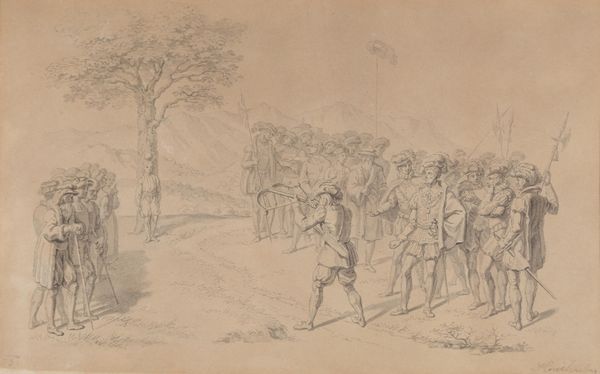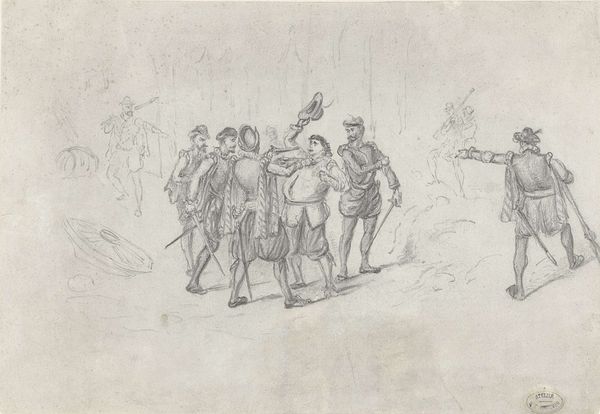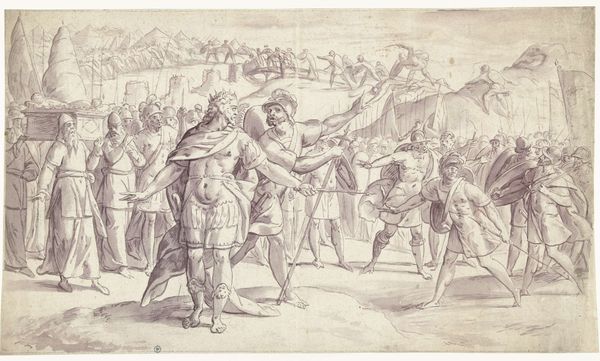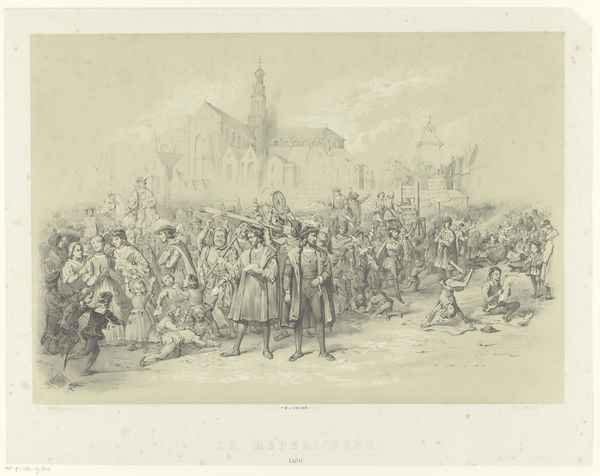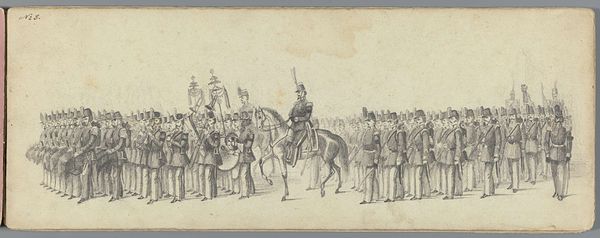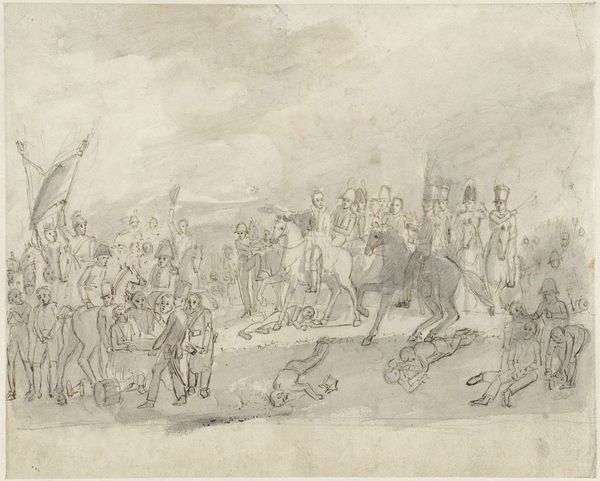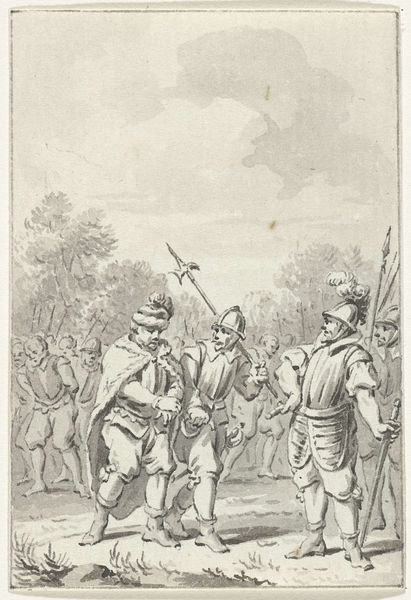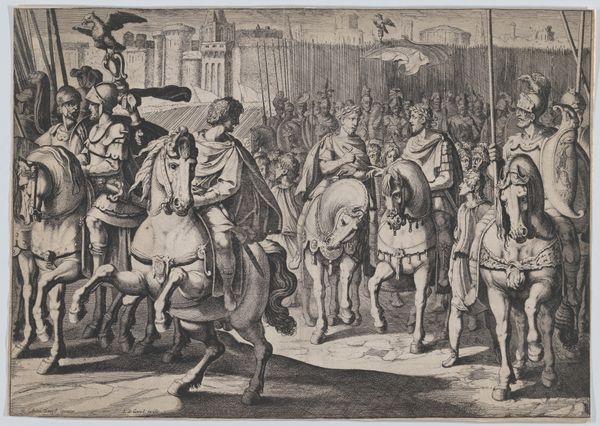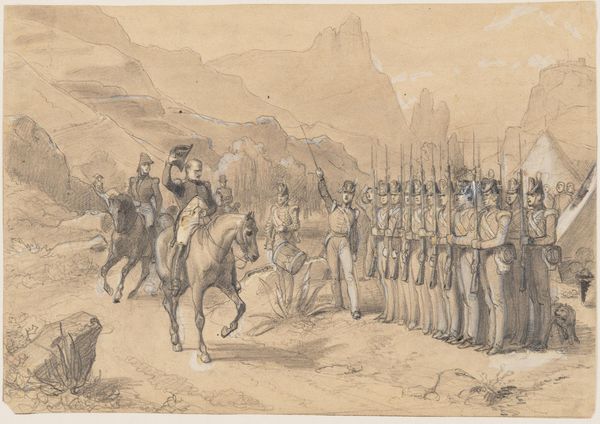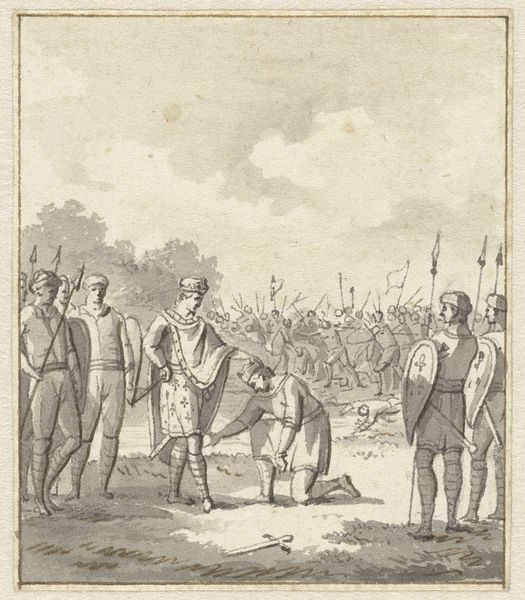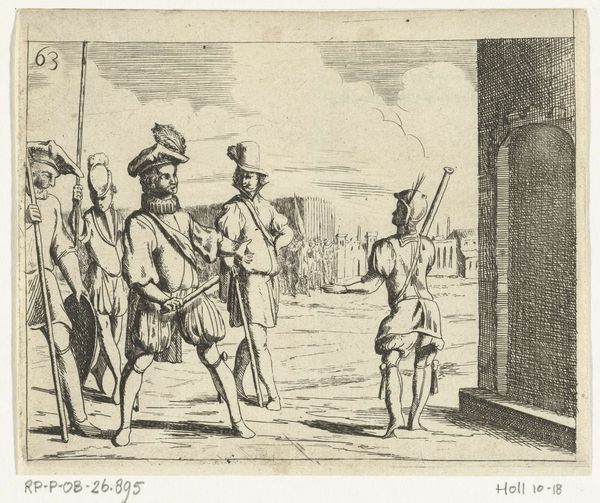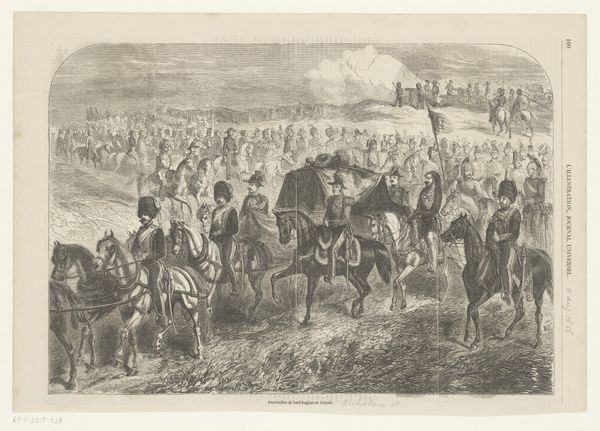
Wilhelm Tell har skudt æblet af sin søns hoved 1810 - 1873
0:00
0:00
drawing, pencil
#
drawing
#
narrative-art
#
figuration
#
romanticism
#
pencil
#
history-painting
Dimensions: 87 mm (height) x 95 mm (width) (bladmaal)
Wilhelm Marstrand sketched this scene of Wilhelm Tell shooting the apple off his son’s head sometime in the 19th century, using graphite on paper. The legend of Wilhelm Tell was a popular subject at this time, as it embodied the burgeoning nationalist sentiments across Europe, particularly in countries under foreign rule or seeking unification. Tell, a Swiss folk hero, resists the authority of the Austrian overlords and, with his crossbow skills, becomes a symbol of defiance and the struggle for independence. Marstrand’s sketch captures a pivotal moment in the story, laden with socio-political symbolism. The tale of Tell was a powerful narrative during the 19th century, which emphasized the virtues of self-determination and resistance against oppression. Artists and writers drew upon such national myths to inspire a sense of collective identity and resistance to foreign domination. Historians often look to popular myths and legends to understand the political desires of a particular era. Folk tales can show how people thought about authority, freedom, and what they were willing to fight for.
Comments
No comments
Be the first to comment and join the conversation on the ultimate creative platform.
